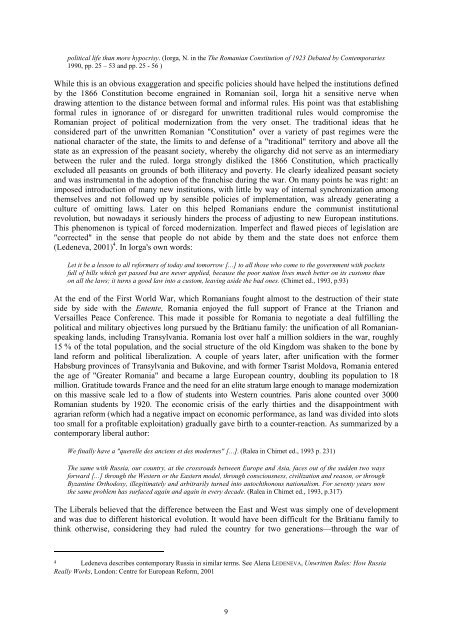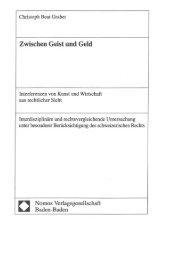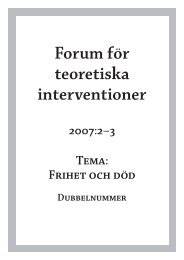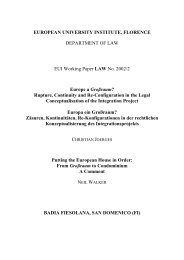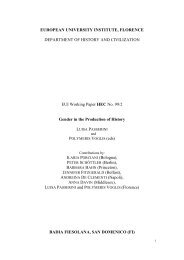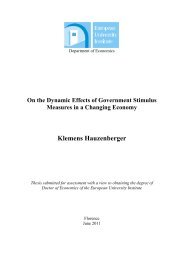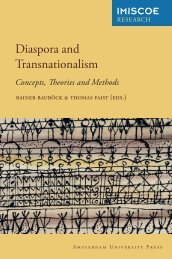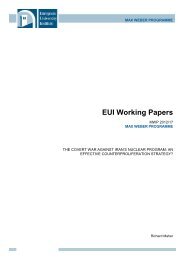Sinziana-Elena Poiana Ioana Lupea Irina-Madalina Doroftei Alina ...
Sinziana-Elena Poiana Ioana Lupea Irina-Madalina Doroftei Alina ...
Sinziana-Elena Poiana Ioana Lupea Irina-Madalina Doroftei Alina ...
You also want an ePaper? Increase the reach of your titles
YUMPU automatically turns print PDFs into web optimized ePapers that Google loves.
political life than more hypocrisy. (Iorga, N. in the The Romanian Constitution of 1923 Debated by Contemporaries<br />
1990, pp. 25 – 53 and pp. 25 - 56 )<br />
While this is an obvious exaggeration and specific policies should have helped the institutions defined<br />
by the 1866 Constitution become engrained in Romanian soil, Iorga hit a sensitive nerve when<br />
drawing attention to the distance between formal and informal rules. His point was that establishing<br />
formal rules in ignorance of or disregard for unwritten traditional rules would compromise the<br />
Romanian project of political modernization from the very onset. The traditional ideas that he<br />
considered part of the unwritten Romanian "Constitution" over a variety of past regimes were the<br />
national character of the state, the limits to and defense of a "traditional" territory and above all the<br />
state as an expression of the peasant society, whereby the oligarchy did not serve as an intermediary<br />
between the ruler and the ruled. Iorga strongly disliked the 1866 Constitution, which practically<br />
excluded all peasants on grounds of both illiteracy and poverty. He clearly idealized peasant society<br />
and was instrumental in the adoption of the franchise during the war. On many points he was right: an<br />
imposed introduction of many new institutions, with little by way of internal synchronization among<br />
themselves and not followed up by sensible policies of implementation, was already generating a<br />
culture of omitting laws. Later on this helped Romanians endure the communist institutional<br />
revolution, but nowadays it seriously hinders the process of adjusting to new European institutions.<br />
This phenomenon is typical of forced modernization. Imperfect and flawed pieces of legislation are<br />
"corrected" in the sense that people do not abide by them and the state does not enforce them<br />
(Ledeneva, 2001) 4 . In Iorga's own words:<br />
Let it be a lesson to all reformers of today and tomorrow […] to all those who come to the government with pockets<br />
full of bills which get passed but are never applied, because the poor nation lives much better on its customs than<br />
on all the laws; it turns a good law into a custom, leaving aside the bad ones. (Chimet ed., 1993, p.93)<br />
At the end of the First World War, which Romanians fought almost to the destruction of their state<br />
side by side with the Entente, Romania enjoyed the full support of France at the Trianon and<br />
Versailles Peace Conference. This made it possible for Romania to negotiate a deal fulfilling the<br />
political and military objectives long pursued by the Brătianu family: the unification of all Romanianspeaking<br />
lands, including Transylvania. Romania lost over half a million soldiers in the war, roughly<br />
15 % of the total population, and the social structure of the old Kingdom was shaken to the bone by<br />
land reform and political liberalization. A couple of years later, after unification with the former<br />
Habsburg provinces of Transylvania and Bukovine, and with former Tsarist Moldova, Romania entered<br />
the age of "Greater Romania" and became a large European country, doubling its population to 18<br />
million. Gratitude towards France and the need for an elite stratum large enough to manage modernization<br />
on this massive scale led to a flow of students into Western countries. Paris alone counted over 3000<br />
Romanian students by 1920. The economic crisis of the early thirties and the disappointment with<br />
agrarian reform (which had a negative impact on economic performance, as land was divided into slots<br />
too small for a profitable exploitation) gradually gave birth to a counter-reaction. As summarized by a<br />
contemporary liberal author:<br />
We finally have a "querelle des anciens et des modernes" […]. (Ralea in Chimet ed., 1993 p. 231)<br />
The same with Russia, our country, at the crossroads between Europe and Asia, faces out of the sudden two ways<br />
forward […] through the Western or the Eastern model, through consciousness, civilization and reason, or through<br />
Byzantine Orthodoxy, illegitimately and arbitrarily turned into autochthonous nationalism. For seventy years now<br />
the same problem has surfaced again and again in every decade. (Ralea in Chimet ed., 1993, p.317)<br />
The Liberals believed that the difference between the East and West was simply one of development<br />
and was due to different historical evolution. It would have been difficult for the Brătianu family to<br />
think otherwise, considering they had ruled the country for two generations—through the war of<br />
4 Ledeneva describes contemporary Russia in similar terms. See Alena LEDENEVA, Unwritten Rules: How Russia<br />
Really Works, London: Centre for European Reform, 2001<br />
9


